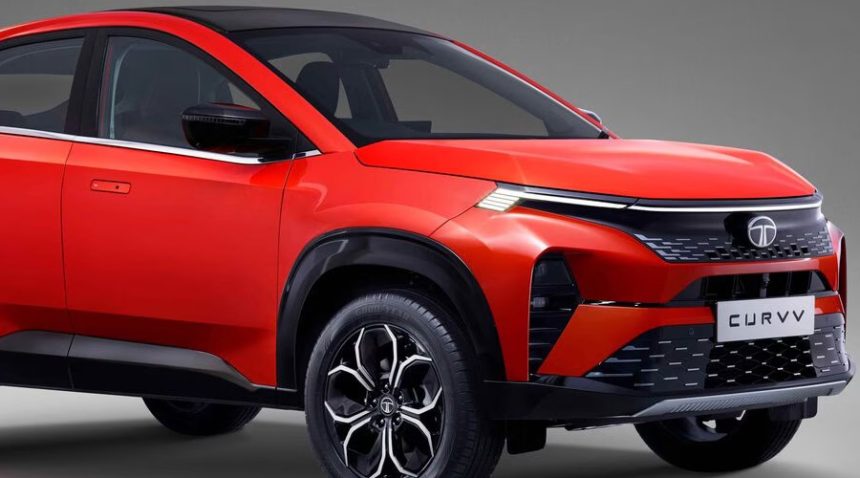Let’s take a close look at the company’s plans, progress, and the hurdles it faces
Tata Motors is one of India’s most trusted automobile brands. Known for its long history of innovation and resilience, the company is now focusing on electric vehicles (EVs) to strengthen its position in the market. As the world shifts towards clean energy and sustainable transport, Tata Motors is making big investments in EVs, hoping this will help it regain leadership. But the road is not without challenges. Let’s take a close look at the company’s plans, progress, and the hurdles it faces.
Tata Motors’ EV Vision
Tata Motors has announced plans to invest about ₹35,000 crore (around 4 billion US dollars) over the next five years to boost its EV business. The company aims to increase its range of EV models from 8 to 15 by 2030. This includes upgrading existing petrol and diesel vehicles to cleaner options and adding advanced technology features.
Tata Motors has set an ambitious goal to capture 50% of India’s EV market share in the coming years. In May 2025, its market share had fallen to about 35% from over 80% in 2023. Despite this drop, Tata Motors remains confident that its investments in new products, better technology, and wider charging infrastructure will help it regain a leading position.
New EV Models: From Affordable to Premium
To appeal to different customer groups, Tata Motors is working on EVs across price points. The company recently launched the Harrier EV, a premium electric SUV, with a starting price of around ₹21.5 lakh. Bookings for this model are already open. Alongside, Tata is preparing to launch the Sierra EV, another premium SUV. Both these models aim to compete with high-end EVs from other manufacturers.
Earlier, Tata Motors introduced the Curvv EV, positioned between its popular Nexon and Harrier models. This crossover EV offers battery options that can deliver up to 585 kilometers of driving range on a full charge. The car supports fast charging, allowing for quicker top-ups—an important feature as range anxiety remains a concern for EV buyers.
In addition, Tata Motors is developing its new Avinya platform. This will be the base for future models offering ultra-fast charging (500 km range in 30 minutes) and high driving range. However, the launch of these models is expected only around 2026 or 2027 due to delays in development.
The Challenge of Falling Market Share
Tata Motors once dominated India’s EV market with a share of over 80%. However, as competition increased, its market share dropped to about 35% by mid-2025. Competitors like MG Motor and Mahindra & Mahindra have launched attractive EVs with better features and longer ranges, drawing customers away from Tata.
For example, MG Motor now holds over 30% of India’s EV market, while Mahindra has grown its share to about 21%. Both companies have focused on SUVs and crossovers with stylish designs and advanced technology. Tata’s sales have also been affected by the end of government subsidies under the FAME-II scheme, making EVs costlier and reducing demand.
Supply Chain and Production Challenges
A key risk Tata Motors faces is related to its supply chain. Electric vehicles depend on parts like batteries, motors, and rare earth magnets. Recently, China placed restrictions on the export of rare earth magnets, which are used in EV motors and sensors. This could lead to shortages or higher costs. Tata Motors has said that production is safe for now, but the company is looking at ways to use alternative materials or redesign its motors to avoid reliance on these magnets.
In terms of production, Tata has started making the Harrier EV at its Pune plant. The company is also setting up a battery gigafactory in the United Kingdom, which will supply batteries for Jaguar Land Rover (JLR) electric vehicles. However, plans to locally assemble JLR EVs in India have been put on hold for now because of cost and quality concerns.
Building the Charging Network
One of the biggest worries for EV buyers is where to charge their cars, especially on long journeys. Tata Motors is addressing this by working with partners to expand charging stations across India. The company has started setting up high-speed MegaChargers on key highways, with a plan to create around 400,000 charging points by 2027. A strong charging network will make it easier for people to switch to EVs and increase confidence in Tata’s EV products.
Strong Backing from Jaguar Land Rover
Jaguar Land Rover, owned by Tata Motors, is doing well and bringing in profits. JLR reported its highest profit in a decade for the quarter ending March 2025. This success provides Tata Motors with additional cash and technical know-how to support its EV journey. Tata plans to use this partnership to develop advanced platforms, share technology, and even sell premium EVs under both brands in different markets.
Competition Heats Up
The EV market in India is becoming more crowded. Besides MG Motor and Mahindra, companies like Hyundai and BYD have entered the space with models that offer longer ranges, better features, and competitive pricing. Tesla is also preparing to enter the Indian market, which could change the game further.
Tata Motors must ensure that its new EVs meet or beat these competitors in terms of design, technology, price, and performance. The delay of premium models like the Avinya could give rivals time to strengthen their positions.
Can Tata Motors Regain Leadership?
Tata Motors has a clear plan and is putting serious money behind it. The company is expanding its EV portfolio to cover all price segments—from affordable models like Nexon EV to premium options like Harrier EV and Sierra EV. It is also working on creating a nationwide charging network and is backed by a profitable and experienced partner in JLR.
However, Tata Motors needs to act fast. The market is moving quickly, and customers now have more choices than ever. To succeed, Tata must deliver new models on time, ensure supply chains are strong, and offer vehicles that match or exceed the features and performance of rivals.
If Tata Motors can achieve these goals, it has a good chance of becoming India’s top EV maker once again. But if delays, supply issues, or stronger competition slow its progress, the company may find it hard to return to the top spot.
Final Thought
Tata Motors is betting big on electric vehicles to secure its future. Its investments in new models, infrastructure, and technology show a strong commitment. While challenges remain, especially from rivals and supply chains, Tata’s efforts could help it take back the lead in India’s fast-growing EV market—if execution stays on track and customer needs are met.





